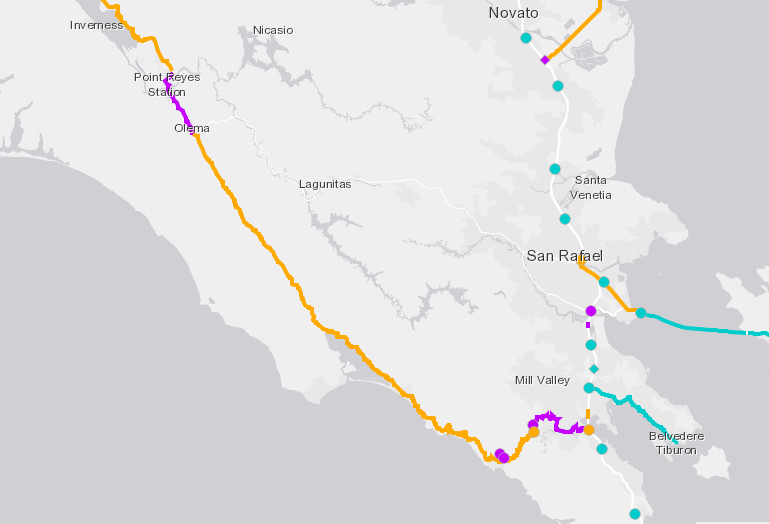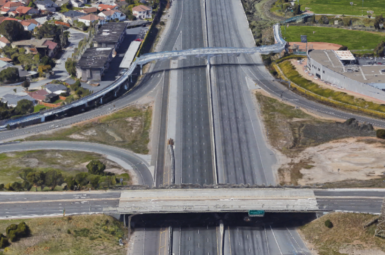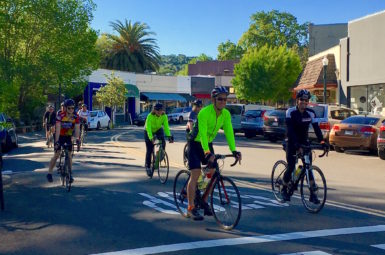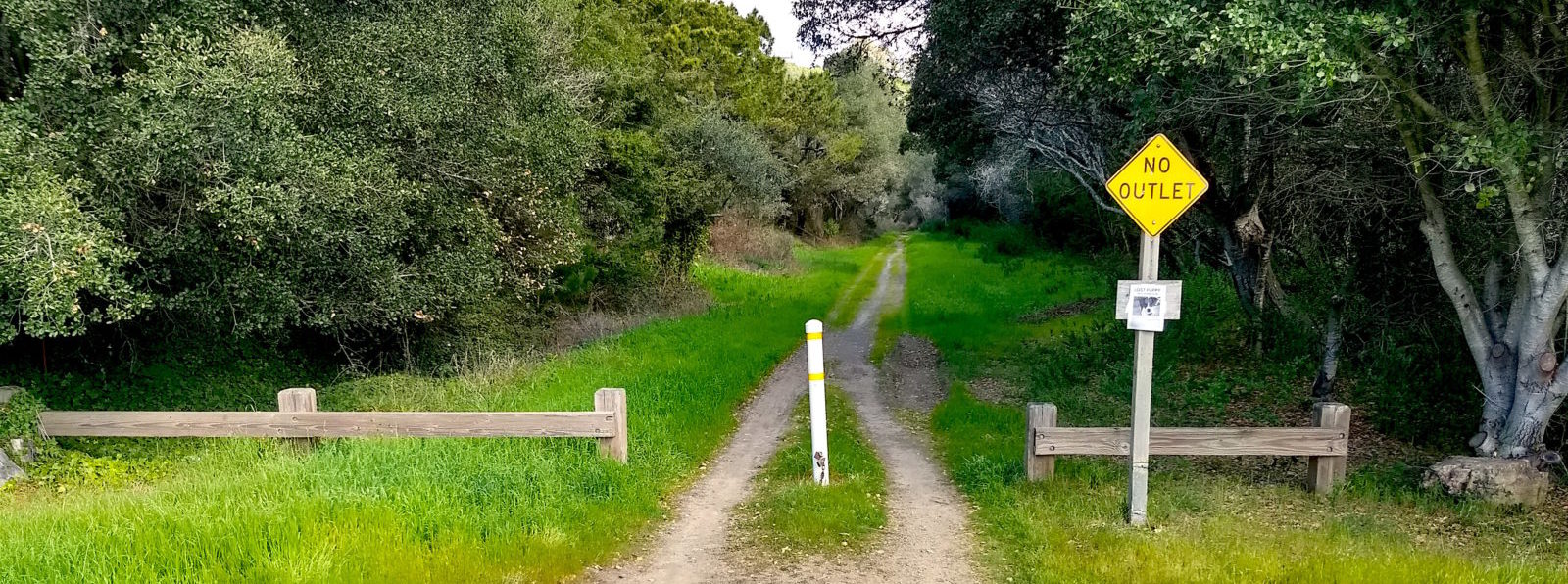news Caltrans Plans Better Bicycling Along & Across Marin’s Highways
Pictured above: Proposed multi-use pathway along the Tamalpais overcrossing in Corte Madera. Rendering by Skidmore, Owings, and Merrill, LLP.
Acknowledging that state highways serve as a major barrier to walking and bicycling, Caltrans recently released a plan to improve bicycling along and across highways in the Bay Area. The Caltrans District 4 Bike Plan identifies several priority projects in Marin that would improve the safety and convenience of bicycling by establishing new connections or improving existing ones.
Plan Highlights
Caltrans Bike Plan projects can be viewed on an interactive map here.
The project list can be reviewed here (pg. 14-16), but we’ve picked out some of our favorites below:
Improved Routes Along State Highways
- 131 (Tiburon Blvd.), Tiburon: Protected Bike Lanes
- 1, (Shoreline Highway), Tam Valley: Multi-Use Path
- 1 (Shoreline Highway), Tam Valley to Sonoma County: Widen Shoulders Where Feasible
Improved Freeway Overcrossings
- 101/131 Interchange, Strawberry: Buffered Bike Lanes
- Tamalpais/101 Interchange, Corte Madera: Multi-Use Path
- Ignacio Blvd., Novato: Buffered Bike Lanes
Improved Freeway Undercrossings
- 4th St., San Rafael: Protected Bike Lanes
- N. San Pedro Rd., San Rafael: Bike Lanes
- Bellam Blvd., San Rafael: Multi-use Path
- Lucas Valley Rd., Marinwood: Bike Lanes
Implementation
Plans mean very little without some sort of path to implementation. Fortunately, Caltrans is required by state law–and several of its own policies–to accommodate or consider the needs of bicyclists wherever possible.
The highest potential for implementation will come through Caltrans’ State Highway Operation and Protection Program (SHOPP), which serves as the State’s funding stream for highway maintenance projects. With several low cost projects now identified through the District 4 Bike Plan, Caltrans will look for opportunities to fold needed bicycling improvements into routine maintenance projects.
Larger projects, like new freeway overcrossings, will require a much bigger lift. The good news, however, is that Caltrans is finally considering the needs of all road users after decades of focus on freeway expansion and vehicular traffic. The agency has ambitious goals to double walking and triple bicycling trips by 2020, and to make walking and bicycling safe, convenient, and comfortable transportation options for Californians of all ages, abilities, and incomes by 2040.
MCBC’s Role
MCBC has been engaged since the inception of the District 4 Bike Plan as a participant on the Technical Advisory Committee. Most of the projects that were identified in Marin came out of a collaborative process between MCBC, local bike advocates, city/town staff, elected officials, and Marin’s Bicycle and Pedestrian Advisory Committees (BPAC’s).
Moving forward, we will continue to look for opportunities to advance the projects identified in this plan and hold Caltrans accountable to its ambitious policies, plans, and goals.
HOW YOU CAN HELP
We are continuing to identify those MCBC members and enthusiastic riders who want to be involved.
Let us know that Safe Access is important to you – we are refining our email alerts for Road and Transportation Projects and would like to include you. Please take a moment to complete your information below, and if there’s a specific section of the county you are most interested in, let us know in the comment section. We also have specific funds earmarked for these efforts.
